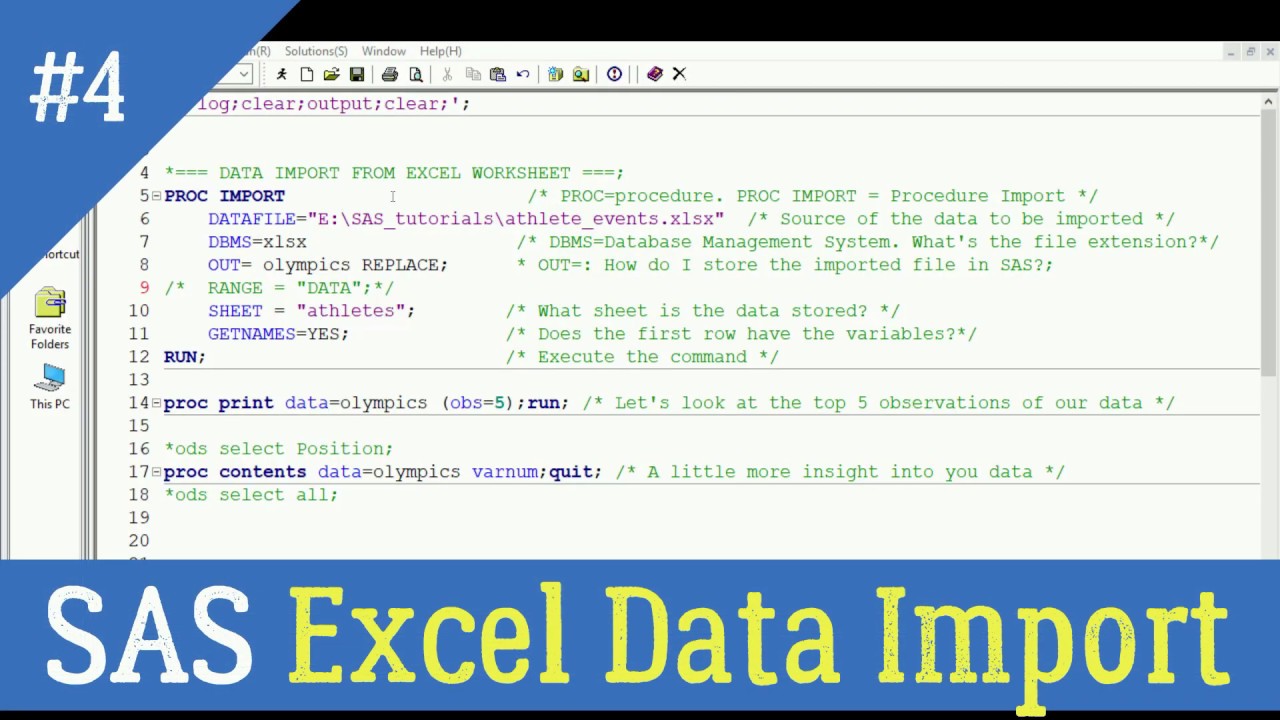Import Excel's Second Sheet into SAS Easily

When working with large datasets, analysts and data scientists often find themselves needing to import multiple sheets from an Excel workbook into SAS for statistical analysis. While SAS provides robust tools for data manipulation and analysis, accessing the second or subsequent sheets directly from Excel can be a bit tricky if you're not familiar with the necessary functions and techniques. This blog post will walk you through the steps to import Excel's second sheet into SAS effortlessly.
Understanding Excel and SAS Integration

Before we dive into the specifics, it’s important to understand how SAS interacts with Excel:
- PROC IMPORT: This procedure in SAS allows for the direct import of Excel files into SAS datasets.
- Mixed-Mode Sheets: If your Excel file has sheets containing both data and non-data elements (like merged cells or charts), PROC IMPORT might have issues.
- Sheet Naming: Excel sheets can be referred to by their name or position number in SAS.
🔍 Note: Always ensure your Excel data is clean and formatted in a way that SAS can easily interpret, especially when importing multiple sheets.
Importing the Second Sheet

To import the second sheet of an Excel file into SAS, we’ll use PROC IMPORT with specific parameters:
Step-by-Step Guide:

-
Open your SAS Environment
-
Identify the Excel File Path: Ensure you know the full path of your Excel file.
-
Run PROC IMPORT:
proc import datafile=“C:\Path\To\Your\ExcelFile.xlsx” out=work.second_sheet dbms=xlsx replace; sheet=“Sheet2”; run;
| Parameter | Description |
|---|---|
| datafile | Full path to your Excel file. |
| out | Name of the dataset to be created in SAS (in this case, 'work.second_sheet'). |
| dbms | Specifies the Excel file format. Use 'xlsx' for 2007+ versions. |
| replace | Option to replace the existing dataset if it already exists. |
| sheet | Specifies which sheet to import. Here, "Sheet2" is used for the second sheet. You can also use a number like '2' if sheets are in order. |

📌 Note: If your sheet names have spaces or special characters, use them as is within quotes, e.g., 'Data Sheet 2'. If you want to avoid manual typing of sheet names, you can reference sheets by their position.
Handling Errors and Edge Cases

- Sheet Naming: If your Excel workbook has sheets named dynamically, make sure your SAS code can handle this by using dynamic referencing or position numbers.
- Format Compatibility: Older Excel files (.xls) might not be compatible with newer SAS versions. Convert to .xlsx if needed.
- Non-data Elements: If sheets contain macros, charts, or excessive formatting, PROC IMPORT might skip or mishandle data. Clean your Excel file before import if possible.
Now that you have successfully imported the second sheet into SAS, you can start performing your data analysis. Remember, SAS offers a wealth of procedures and functions to manipulate, analyze, and visualize data, making it an invaluable tool in any data scientist's or analyst's arsenal.
💡 Note: Always verify the dataset after import to ensure no data has been lost or misinterpreted due to formatting issues.
To wrap up, importing the second sheet from an Excel file into SAS can streamline your data analysis process by reducing the time spent on data preparation. With the steps provided above, you can automate the import process, handle dynamic sheet names, and overcome common pitfalls associated with Excel and SAS data transfer. This foundational knowledge sets the stage for more complex data management and analysis tasks in SAS, enhancing your efficiency and accuracy in data handling.
Can I import multiple sheets from an Excel file into SAS?

+
Yes, you can import multiple sheets by using a loop or multiple PROC IMPORT statements, each specifying a different sheet. Remember to adjust the output dataset name accordingly for each sheet.
What should I do if my Excel sheets have headers?

+
PROC IMPORT can automatically detect headers. However, if your headers are not in the first row or are complex, you might need to use the ‘getnames=yes’ option to explicitly inform SAS to treat the first row as variable names.
How do I handle date formats when importing from Excel?

+
SAS might interpret date fields incorrectly due to locale differences. Use the INFORMATS parameter in PROC IMPORT to specify date formats like ‘ddmmyy’ or ‘mmddyy’ if needed.